Goggles for snowboarding or skiing do a few things: they make it easier for your to see, they protect you from UV, give you a bit of physical protection for your eyes, and also keep things a little bit warmer by stopping the wind.
As I see it, there are two main ways to go when you are looking at buying snow goggles for either snowboarding or skiing. You can either get a pair of goggles that have a single lens that works pretty well for most conditions, or you can go with goggles that have two lenses – one for sunny conditions and one for dull conditions.
Both have a their advantages and disadvantages
If you choose a pair of goggles with a single lens for all conditions, you won’t have to worry about checking the weather and thinking about whether you brought the right lens, just go out and ride. Cheaper and easier.
Goggles with multiple lenses will give a better result than and all-conditions lens. You can’t beat a specific sunny lens for a bright day, or a good low light lens on a flat and foggy day. You will have to make sure you pick the right one for the day, and either hope that the conditions don’t change, or ride with your second lens in your pocket. More expensive, but in the right conditions will give you great results.
buying snow goggles
First up is choosing the general look of the goggle that you like. There are so many options out there for goggles, you will be able to find the look you are after, with a lens in a colour that will still give you a clear picture.
Lens styles
There are three main styles of lenses, which are one of the main “looks” of a goggle. The three different versions are cylindrical, spherical and toric.
Cylindrical
Round one way, like the lens is wrapped around a cylinder. Technically these can have a little bit of distortion, but in most cases it probably isn’t something you will notice outside of a lab.
There are two main ways to make cylindrical lenses, the easiest and cheapest is to have the lens material made flat, then bend it into the final curved position. This way is much cheaper, so it is found on entry and lower end goggles. Out of the two ways to make cylindrical lenses, this is going to have the most distortion.
Goggles with this type of lens: Dragon D1
The second way is injection molding, which means that the lens is created in its final shape. This is a more expensive process, but gives a higher quality end result, with less distortion.
Goggles with this type of lens: Dragon NFX2, Oakley Line Miner
Spherical
Spherical lenses have a uniform or consistent curve along the surface of the lens.
Goggles with this type of lens: Dragon X2, Oakley Flight Deck, Anon M2
Toric
Toric lenses are curved both horizontally and vertically, with a slightly more spherical shape, that is made to closely match the shape of your eye. At a quick glance they will look quite similar to a spherical goggle. The shape of toric goggles means that they can have a low profile, or close fit to your face, with less distortion and a wide field of vision. Get ready to pay quite a bit for toric goggles.
Goggles with this type of lens: Anon M4 Toric, Dragon PXV.
Lens technology
All of the big brands of goggles will have some sort of lens technology, which
Oakley have Prizm, Anon have Perceive, Dragon have Lumalens, Smith have Chromapop etc
Without getting super scientific, the main goal of all of these lens technologies is to make everything look better, so that you can focus on riding, rather than trying hard to pick out little details in the terrain. Some colours they tone down, some they bring up, and they are always trying to add contrast, so that you can see little details in the snow more easily.
They difference can be especially noticeable in low light conditions, when the skies are overcast, and the snow is covered in flat light.
You will know it as soon as you put them on, everything will just look nice.
Lens Tints
There are a million different colours and tints of different lenses, and all of them have a specific weather condition that they will do best in. To make it easy, dark lenses block out a lot of light, which makes it easy for your eyes on sunny days, while low light lenses let in a lot of light, making it easier for your eyes when it is overcast, foggy or dark. Then the all-condition lenses sit somewhere in the middle.
Darker or sunny lenses
These block out a lot of light, so just like sunglasses they make it more comfortable when it is bright and sunny.
All-condition lenses
These block out a medium amount of light, so they are great for mixed conditions (when you have a combination of sun and clouds), but you can also get by if it does get foggy or sunny.
Low light lenses
These let quite a lot of light in, helping when it is snowing heavily, and the light is flat and grey.
If you are looking at the lenses in a shop, the easiest way to tell the difference is to see how easily you can see through the goggles. If you can see easily (like in the pink goggles above), they let lots of light through so good when it is dark, if you can’t see much, they will be good in the sun.
The real measurement that lenses use is VLT, which stands for Visible Light Transmission. As some rough numbers, very dark lens lets in less than 10%, an all conditions lens around 15-20%, and low light lenses let in 40% or more.
Dual Lenses
Most goggles will have two layers, which help to make a temperature barrier between the cold outside weather, and your eyes.
What are low bridge goggles?
Low bridge, which is also known as Asian Fit are a better fit for faces where the nose bridge starts below the pupils, high cheekbones or a wider width face. The frames and lenses of the goggles normally stay the same, it is just an addition of extra foam padding around the nose bridge. The extra foam creates a better seal around the face, and stops cold air from getting in the goggles when you are riding or skiing fast.
Anon and Dragon have specific models labeled “Low Bridge”, while all of the new Oakley goggles have the universal fit with extra foam. Oakley make it a bit easier having one model for everyone, and it isn’t a big deal if you don’t need the extra foam, it just squashes down and you won’t even notice it.
What does OTG mean for goggles?
OTG stands for “Over The Glasses”, which mean that goggles are designed, or have a better chance at fitting over a pair of regular glasses. Large frame goggles will have a better change at fitting over glasses, though there are a few models that have specific OTG models.
As a brand, Oakley goggles have cutouts in the frame, which lets the foam squash a little – making all of their models OTG compatible. To increase the odds of them fitting over your glasses, I would choose a L size goggle of theirs over an M.
Here are a couple of OTG models worth having a look at:
Dragon RVX MAG OTG, R1 OTG, D1 OTG, DX3 OTG
Photochromic lenses
You might know of Photochromic lenses as one of the brand names – Transitions. Basically they start as a clear or light coloured lens, that darkens automatically when exposed to UV light.
If you aren’t someone who wants to change lenses depending on the condition, then these could be a good option.
The downside of photochromic lenses is that they change based on the amount of UV light they are exposed to. When it is sunny, it is likely that the UV will be high, so the lenses will darken to make it more comfortable for your eyes. The problem can be when it is a dark but cloudy day, but the UV rating is still high, so the goggles darken when the light is already low, making it harder to see.
Getting the right fit
If you don’t have the chance to try any goggles on, take an educated guess of what size your head is. If it is regular, then probably stick to medium size goggles, or if it big go for a large size.
From most of the big brands, their main goggles will come in (at least) two sizes. Dragon and Anon follow the same setup, where they add “s” to the model name, which means the goggles will suit smaller faces.
For example the Anon M4 or the Dragon X2 fit larger faces, while the Anon M4s and the Dragon X2s will suit smaller faces. Oakley come in S, M and L for small, medium and large faces, though for most adults I would stick to M for most faces, and L for bigger.
All of that is a just for fit, if you are after a certain style or look, there is nothing stopping you. The soft layers of foam will pretty much let anyone wear any size, it just might not be as comfortable as it could be. Even though I don’t have a big face, I still wear big Line Miner L, or Dragon PXV/RVX because I like the bigger field of vision.
Field of view
As a rough guide, you can pretty much count on the bigger the size of the goggle, the better field of vision you will get. Especially with the styles that have more of a “wraparound” look. For a wide field of vision, nothing really comes that close to the Dragon PXV.
Quick change lenses
On pretty much all goggles, you can remove the lens and potentially swap it out. The older way this is done, which is also the cheapest, lets you peel the soft outer frame away from the lens. Although it isn’t hard to do this, depending on the design it can be a bit fiddly while you are trying to work out the method. One other downside is it is easy to get fingerprints on the lens while you are getting it in.
Each brand will have a slightly different method of making the lens changes quicker and easier. On models like the NFX2 and PXV2, Dragon use a couple of levers on each side to release the lens. On newer models like the RVX MAG, they have a single lever and magnets to align the lens.
Anon was the first brand to make magnetic lenses a big feature. Rather than using any clips, they have a series of small magnets that run around the outside of the lens and frame, which make the lens align and snap into place very quickly and easily, with a pretty satisfying snap. This style can’t really be beaten for speed and convenience, but you pay a lot for that feature.
Will the magnetic lenses fall off?
The lenses do clip on with quite a strong snap, and the key to taking them off is to twist the frame away from the lens, so you can “break the seal” on one of the magnets, which make the others easier to come off. For regular riding the lens won’t just magically fall off. I am sure that with a big enough crash you can probably get the lens to break away from the frame, but if that happens you probably have much more serious things to worry about rather than your goggles.
Difference between cheap and expensive snow goggles
The cheapest goggles will have a single cylindrical lens (not injection molded), with simple foam padding that is normally two layers, and often only comes in smaller frame sizes.
As you spend more, you will get nicer injection molded lenses, in either spherical or cylindrical. It is common to get a spare low light lens in this range, though swapping lenses will be a bit fiddly.
The next step up is going to be a similar set of features, but with a quick and easy way to change lenses. You are basically paying for the easy and convenience of quick changes once you get to this point.
At the top end, toric lenses become an option, and the lens changes are as quick and easy to changes as possible. Goggles in this range would be the Anon M4 Toric, which comes with a spare lens, and is very quick to change with its magnetic system.
How to stop fogging
Even if you buy the most expensive goggles, if you do the wrong things you will be able to get them to fog up. There is a difference between fogging between the layers of the lenses (problem with the goggles) and fogging on the inside lens that is closest to your skin.
Goggles do come with an anti-fog coating on the inside of the lens, but it doesn’t last forever. To get the longest life out of it, try not to ever touch it with your skin. If you have a crash, and the goggles fill with snow, try and shake it all out, and do whatever you can not to rub the inside of the lens.
If you wear a neck tube, or anything that covers your mouth, do everything that you can to avoid forcing warm air from the tube up into the goggles. If the weather is really cold and you need to keep your nose covered, just keep an eye on if you see fog trying to build up on the bottom of the lens. With a bit of balance, you should be able to stay very comfortable and keep the goggles fog-free.
I have also found that if you are going to head into a lodge (or anywhere warm) for a break, if you leave your goggles on your head the difference in temperature can easily fog them up as soon as you get inside. If you take them off your head before you go inside, the temperature balances out quickly and the fog won’t be a problem.
Of course, the wetter the conditions, and the warmer the temperature, the harder it will be to keep the fog away. If you ride in places that are cold and dry, it will hardly be an issue.
Helmet compatibility
Goggles and helmets fit together much better than they used to, these days you can pretty much pick any combination and have a nice fit. No matter the brand of goggles, they all use a similar curve on the top of the goggles, which matches up well with most helmets.
If you want to have a super neat fit, you can stick to the same brands. For example: the Smith Maze helmet with I/O, Oakley MOD1 with Line Miners or Anon Logan and M4s.
Are ski and snowboard goggles the same thing?
Yep. Some brands might lean towards either skiing or snowboarding, but the technology and design they use make them interchangeable.
Straps
Whether you wear your goggles on top of a beanie, under or over a helmet, the straps will work no matter how you want to wear them. On the inside of the strap, there is a soft but silicone that grip to your helmet or beanie, to stop it sliding around.
Have any questions about goggles? Leave them in the comments below
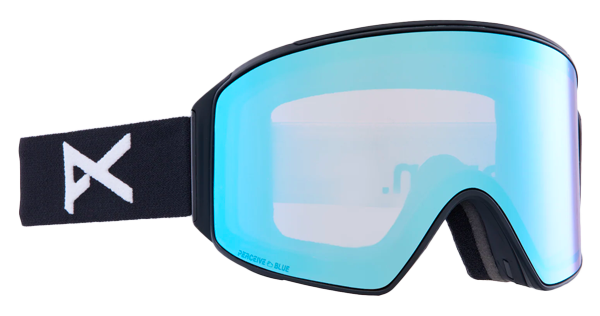
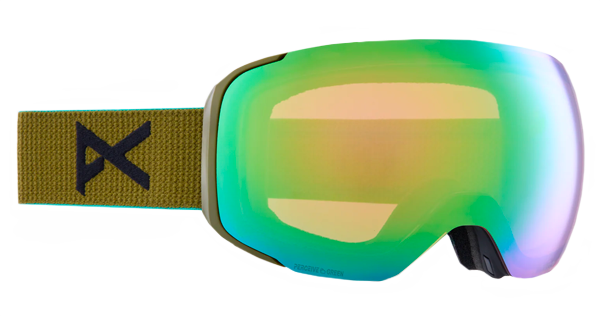
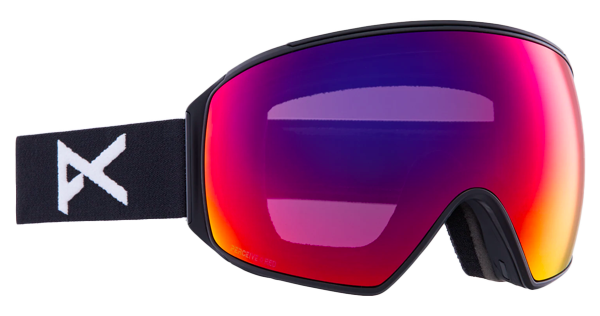
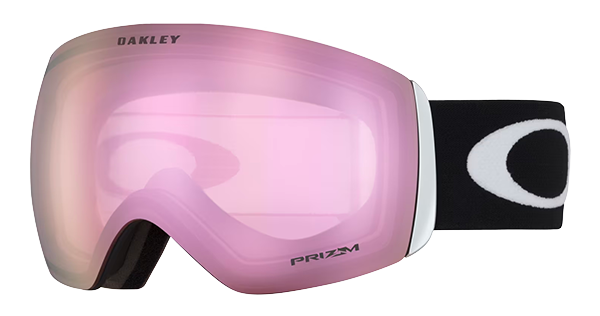
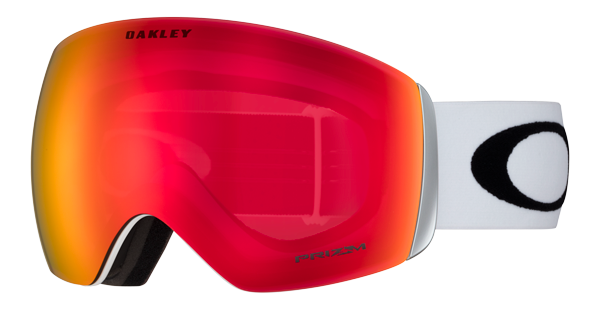
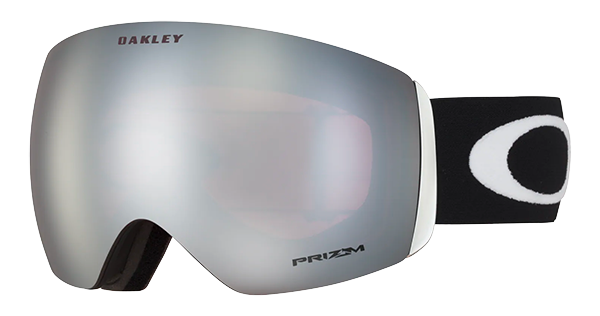
Find the best price on the Big guide to buying snow goggles